A Disappointing Solo Mode for Path of Light and Shadow

Recruit and upgrade a wide variety of characters and buildings across the provinces of Path of Light and Shadow.
In my few multiplayer plays of Path of Light and Shadow, there have been interesting decisions and plenty of ways to achieve victory. With a solo mode in the new expansion, I was eager to return to this interesting mix of area control, buildings, and deck building! Tempering my expectations was a little difficult… So exciting to return to this one!
Game Overview
Game Name: Path of Light and Shadow
Publication Year: 2017
Designers: T. R. Chance, J. Gilmour, and N. Little
Artists: Beth Sobel, Naomi Robinson, and Daniel Solis
Publishers: Indie Boards & Cards and Stronghold Games
Solo Mode: Included in Path of Light and Shadow: Solstice
Area control takes a central role with the different provinces, yet buildings and cards support all sorts of strategies. New recruits constantly appear in the realms, while specific upgrade paths provide interesting options. Finally, the choice to be cruel or merciful is just as vital.
First Play
November 11, 2022
Complexity
3
Latest Play
November 11, 2022
Expansions
1
Setup Time
10 Minutes
Lifetime Plays
2
Play Time
45 Minutes
High Score
119
Game Area
38" x 30"
Low Score
87
Many Roads Ahead
Each province belongs to a certain realm. These provide their own unique decks to recruit cards from. Different probabilities exist, though there are no guarantees.
One of the neat mechanics is the ability to upgrade cards. Nearly every single one has a path, yet there is only a single highest-value card for each track. A race to the top!
This little snippet only shows some of the options, and choices depend on which cards show up in card draws.
It’s possible to focus on a certain faction, yet each realm has a unique blend of cards to carefully consider.
Attacking Provinces
Controlling fortified provinces is often a key component of scoring, but there’s a bit of a conundrum. Larger fortifications are worth the most victory points.
Yet taking control of a province involves an attack, which often inflicts ruin. Effectively, this makes the province worth less while transferring control. Tricky, tricky!
Keep in mind that area control is supposed to an option in terms of victory points. An OPTION… Not a requirement.
Not to jump ahead, but my preferred strategy is to have a single stronghold and focus on the other neat elements.
The Sea of Cards
So many different cards! Granted, there are plenty of duplicates, yet multiple cards can still provide a strategy.
On a random note: If you use larger sleeves, the expansion box top will fit inside the main box to store everything! This is inside my box with the expansion box top.
Note that it’s the top, not the bottom, as I needed just a little extra room. The card dividers will bear some weight, but that’s a small price to pay to save some space.
This should show the sheer amount of content available both in the realm decks, along with the card upgrades.
Planning Movement
Moving around the map is typically slow, limited to a single adjacent space per turn… Aside from a few card action exceptions! So many units to think about.
Choosing where to go partially has to do with conquering provinces. However, the province type, or realm, is the deck to draw from at the end of each turn.
So it can be worthwhile to simply stay put and focus on trying to pick up a faction’s cards. So much to consider!
Which is again why I want to highlight that area control is only a portion of gameplay. Important, but only a portion.
Construction Land
If that wasn’t enough, buildings are also on the menu! These are split up by faction, and a matching unit must participate in the labor in order to construct each one.
Most provide ongoing benefits that cater to different strategies, and focusing on building can lead to some excellent victory point opportunities in the end.
I still haven’t mastered the strategy of diversifying or focusing on a single faction’s buildings. So neat!
The only trouble is that buildings often favor labor-focused units, which may not be the best for conquering.
Single-Sided Solo
All of the previous exposition about the gameplay elements leads up to this moment… The unveiling of the solo mode. Invaders. Who conquer. And only conquer?!
To say I was disappointed would be an understatement. I’ll share specifics further along, but provinces are the only way the solo opponent scores. So… Stop them?
Since the solo opponent went before me each turn and the deck wasn’t shuffled too much, I had my obvious target.
All of the buildings and cards were entirely disregarded. Even the cruel vs. merciful choice was missing. What?!
A Limited Solo Mode: Taking Away Core Gameplay
I know I sound rather upset here, and I am! Hopefully, though, there’s a bit of sense in all my ramblings. To introduce a solo mode that only utilizes the area control aspect isn’t a solo mode to me… It honestly feels like an exercise to learn how to play against a human player who only conquers provinces. In other words, a practice mode for part of the game.
A major part of the multiplayer game is the race to get the highest-value upgraded unit for a specific track. Some players might have a monopoly over a certain faction, yet I have never seen every player focus on a single faction. There is tension that adds a lot of strategic depth to each turn. Conquering every province simply isn’t an option.
Even for players who prefer to focus on area control, it simply isn’t feasible to spend every turn going after different provinces. Constantly changing control leads to ruination… And less victory points. It’s wiser to take over a fairly large swath and then protect it, rather than constantly expanding all over the place. So, who are these solo invaders?!
Again, my issue is entirely with the solo mode. It offered a disappointing experience for a game I know is excellent. All I needed to do was constantly conquer provinces, reduce the victory points the solo opponent gained, and find a couple of small ways to pick up some victory points for myself. Yet I had to constantly conquer almost every single turn.
Not to sound rude, but I wonder who tried out this solo mode. Perhaps it was a group that favored conquering, which might make some sense. Yet to take away the amazing combination of area control, construction, deck building, and even morality feels so disappointing. In short, this solo mode felt like it pared the game down to less than 50% of itself.
Simple but Powerful
My starting units were a mixture of basic characters, an advisor, and a couple of randomly drawn cards from a realm deck. They looked simple, yet they were great!
These units could help me build, conquer, or possibly take an action to move anywhere. My guide was excellent!
Let me again state that this a fantastic multiplayer game with lots going on to form a complex web of choices. Yet that’s the key term: Choices. No one is forced to conquer.
In this solo mode, I didn’t see how I could follow any other path in order to come close to victory. Just… Conquer.
All My Own Provinces
Things got off to a slow start, owing to my preferences for the other elements. Yet as I went after the most recently drawn provinces, I quickly took over the main map.
Note how these areas all lost their fortifications, so they were worth less and less victory points. If the solo opponent took them over, ruination hurt even more.
Unfortunately, this meant I didn’t do too much with exploring the cards and buildings. I was a cruel conqueror.
I’m not opposed to this sort of strategy, but when a game offers so many choices, I felt forced down a single path.
Session Overview
Play Number: 1 and 2
Expansion 1: Path of Light and Shadow: Solstice
Expansion 2: Path of Light and Shadow: Promo Pack
Solo Mode: Included in Path of Light and Shadow: Solstice
Outcome: 87-81 and 119-173 (1 Win and 1 Loss)
Even with a sloppy first play, I barely managed to win with a handful of neat units. I tried again, this time trying to go with a more diverse strategy. The solo opponent picked up nearly all of the province victory points… And although my score improved, I lost handily. Such a letdown for an awesome game… I solved the solo mode in a few turns.
%
1 Play
Affordability
Price & Value
7
Functionality
Challenges & Mechanics
7
Originality
Design & Theme
5
Quality
Components & Rules
10
Reusability
Achievement & Enjoyment
3
Variability
Distinctness & Randomness
4
+ Pros (Positives)
- All of the card artwork is beautiful with plenty of unique characters spread across the realm and upgrade decks.
- Province strength is represented visually with awesome stackable fortification pieces that are easy to see.
- Different options exist for how to utilize each card, often split between taking a linked action or using icons.
- The equivalent of tech trees exist for the buildings and certain cards, leading to lots of combinations and choices.
- Being merciful or cruel is often a clearcut option, yet the expansion offers a way to take a more neutral position.
- High-quality components add to the table presence and help with functionality in the double-layered boards.
– Cons (Negatives)
- There is a single strategy of conquering provinces in order to compete against a very simple solo opponent.
- Setup time can be a little lengthy with all of the different card decks, only some of which are shuffled.
- All of the building, card, and merciful options are practically nonexistent with the lone way to a solo victory.
- Battle dice offer many different faces, which can make it a little tricky to calculcate the probability of success.
Victory Conditions
Score the Most Points
- Overall Goal Progress 100%
Goals and Milestones
Score at least 100 points.
Win at least 1 game.
Continue the Conversation
What do you think about Path of Light and Shadow? Are there any other multiplayer games that missed the mark in solo for you? I want to say again that this is a wonderful game with other players, which is why I sound so indignant! My excitement was destroyed early on, and I’m rather sad that this still isn’t really a solo-friendly title. Maybe someday!

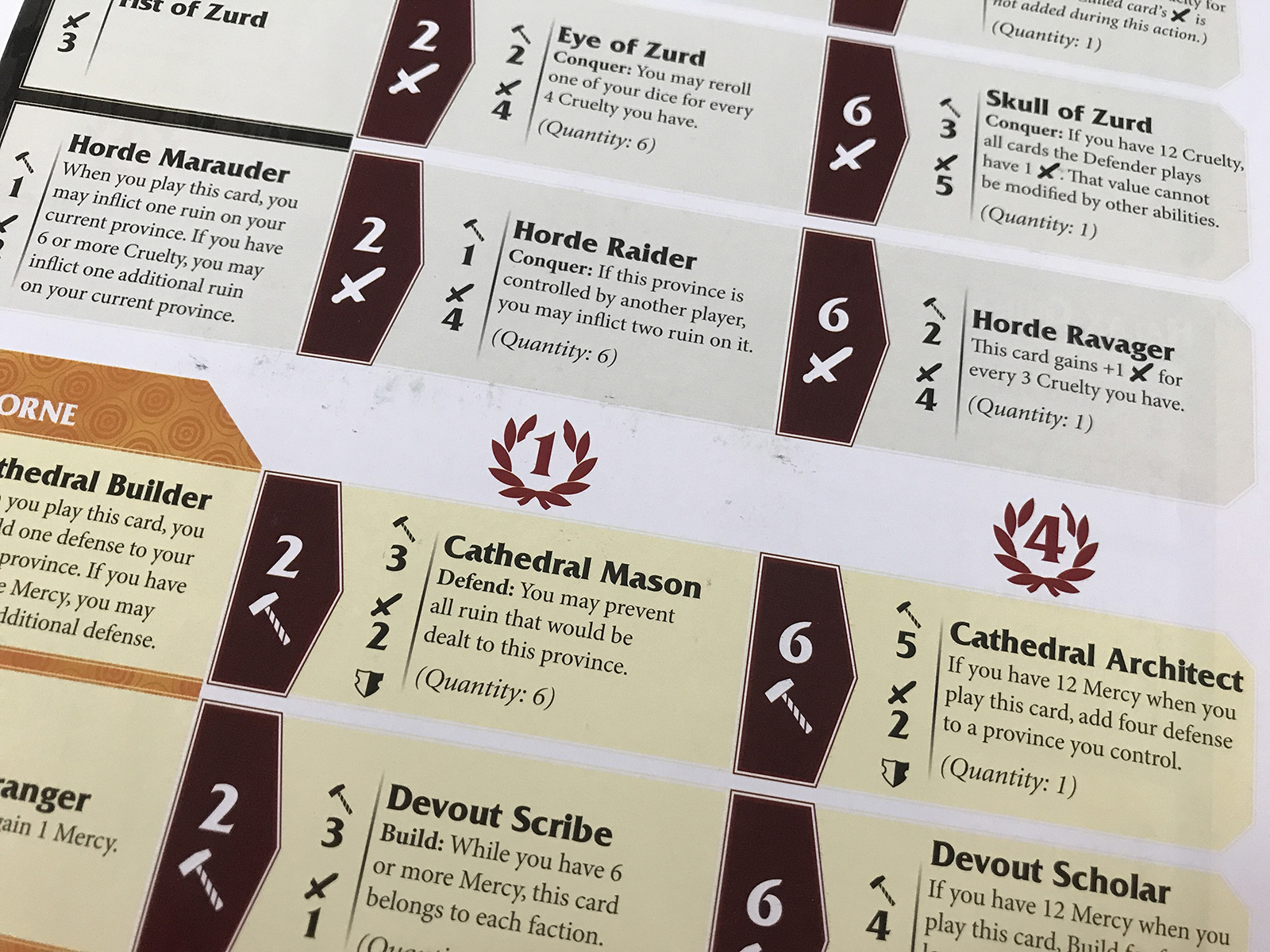
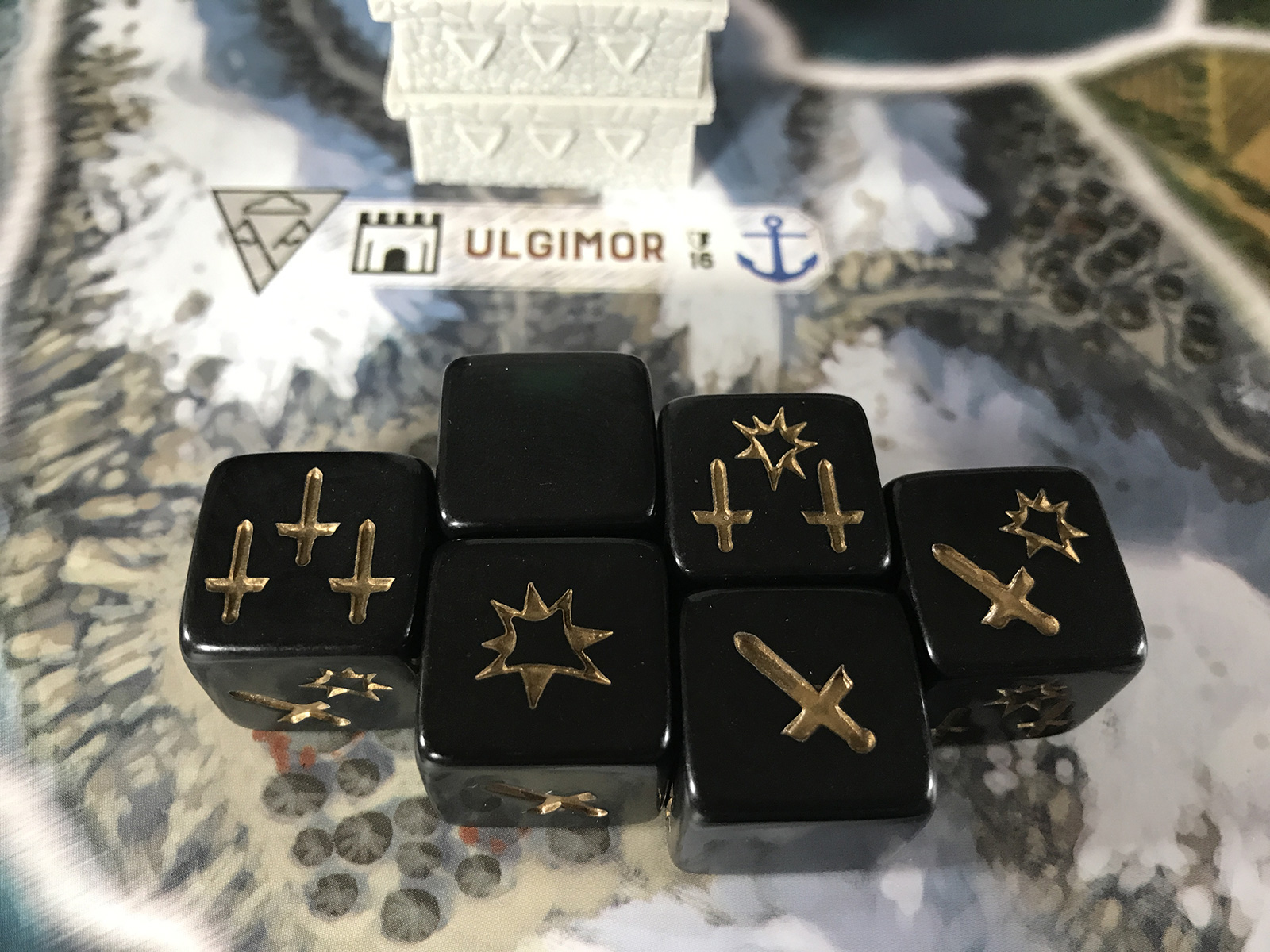
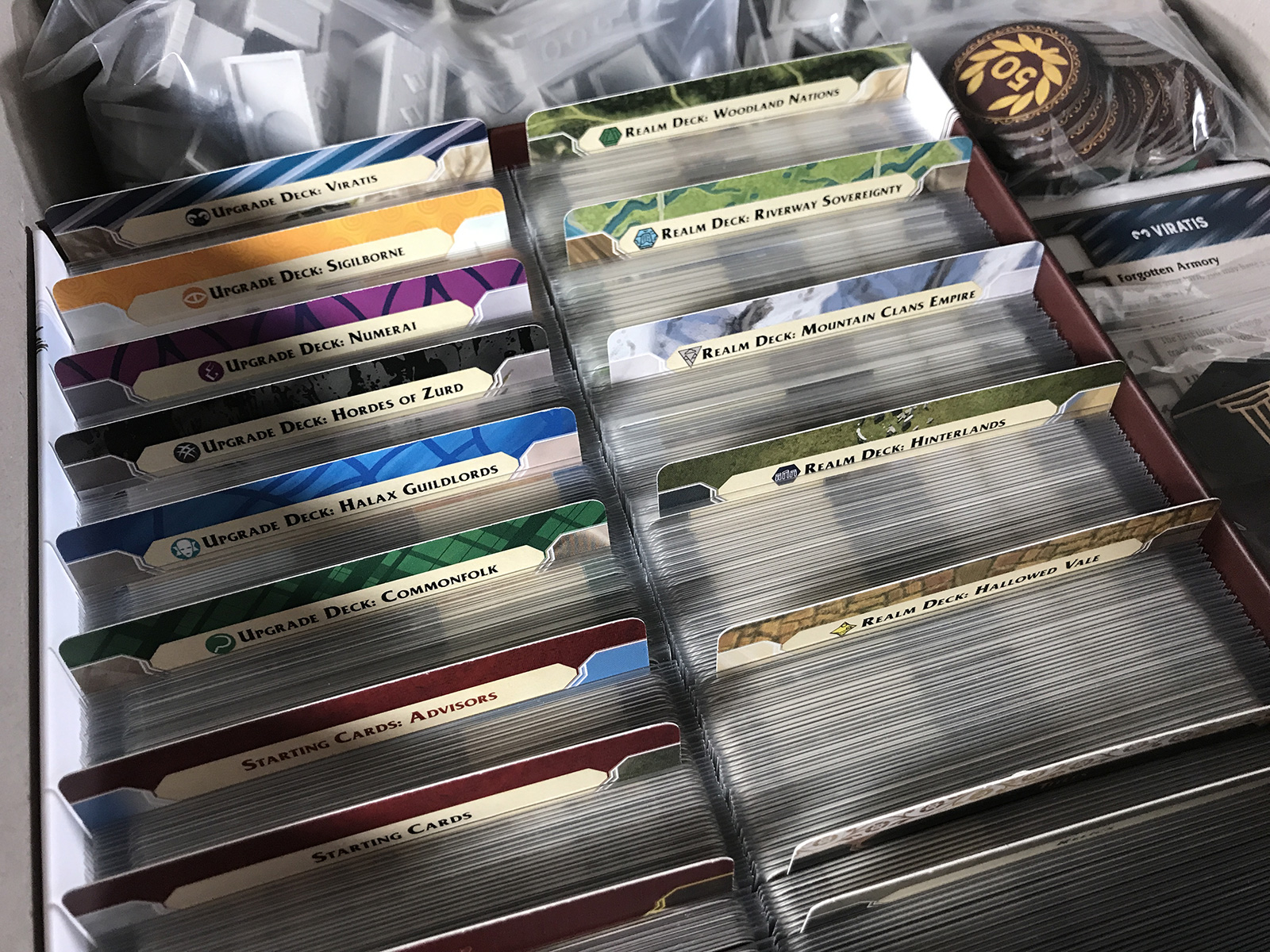
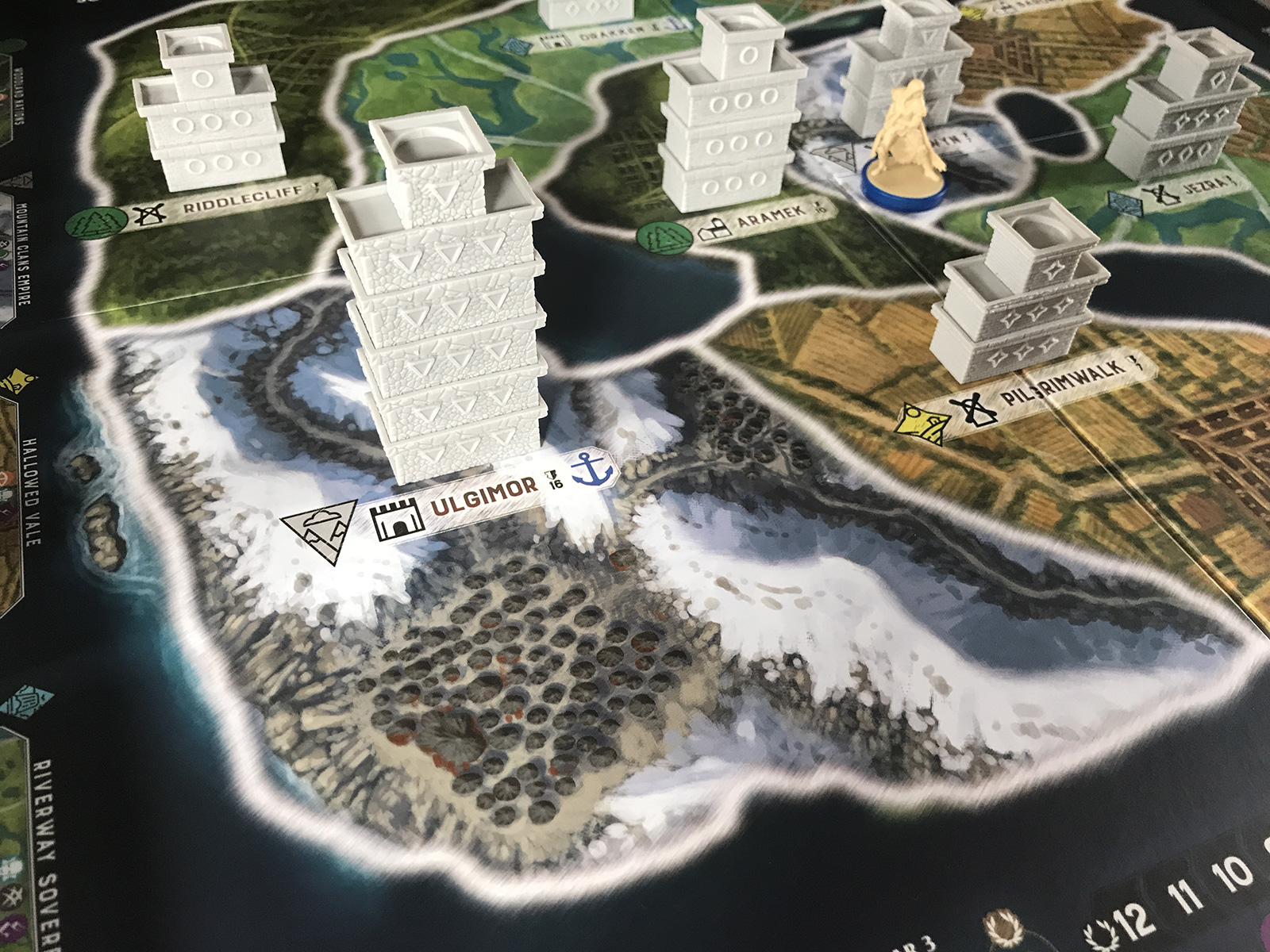

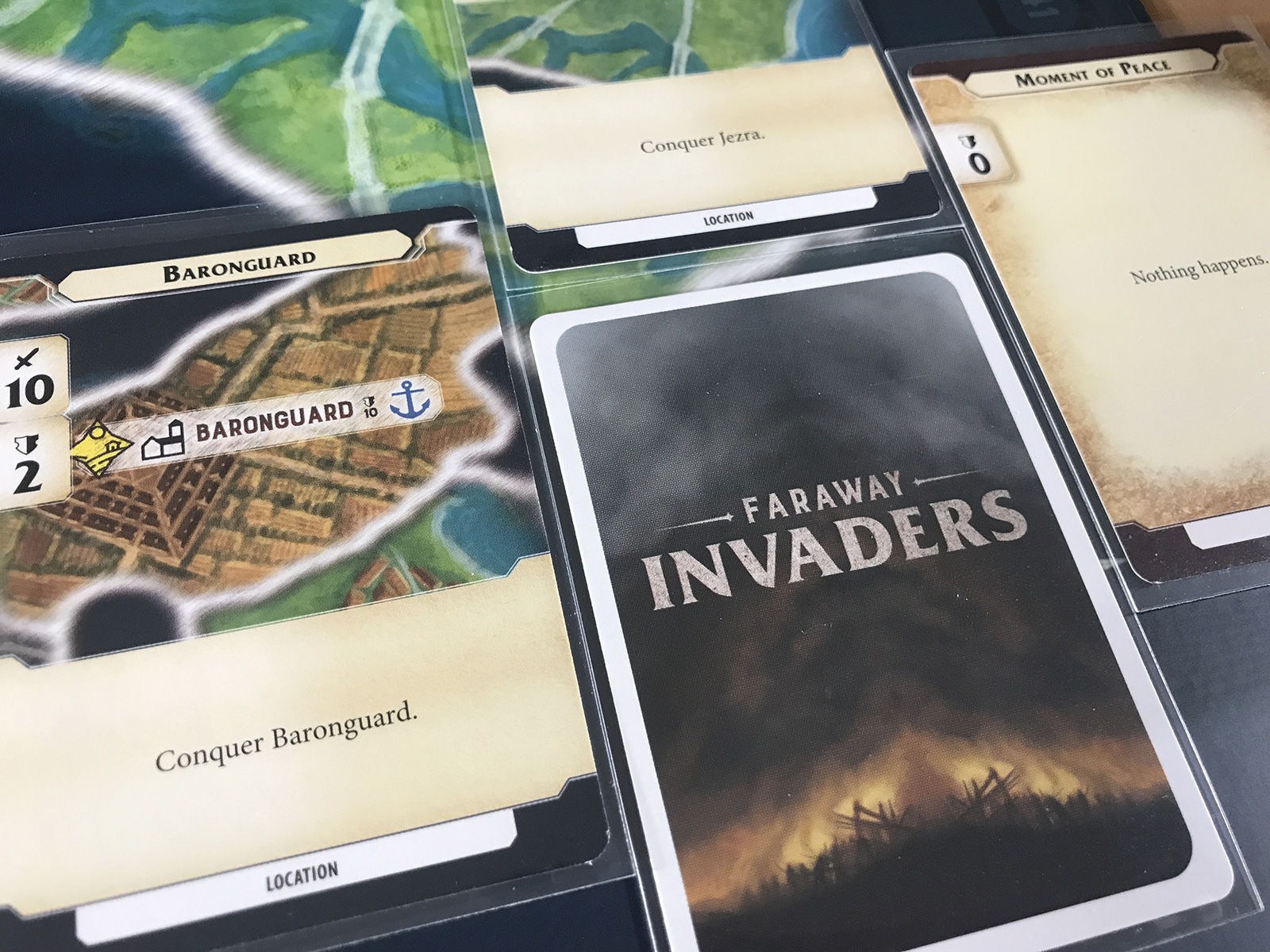
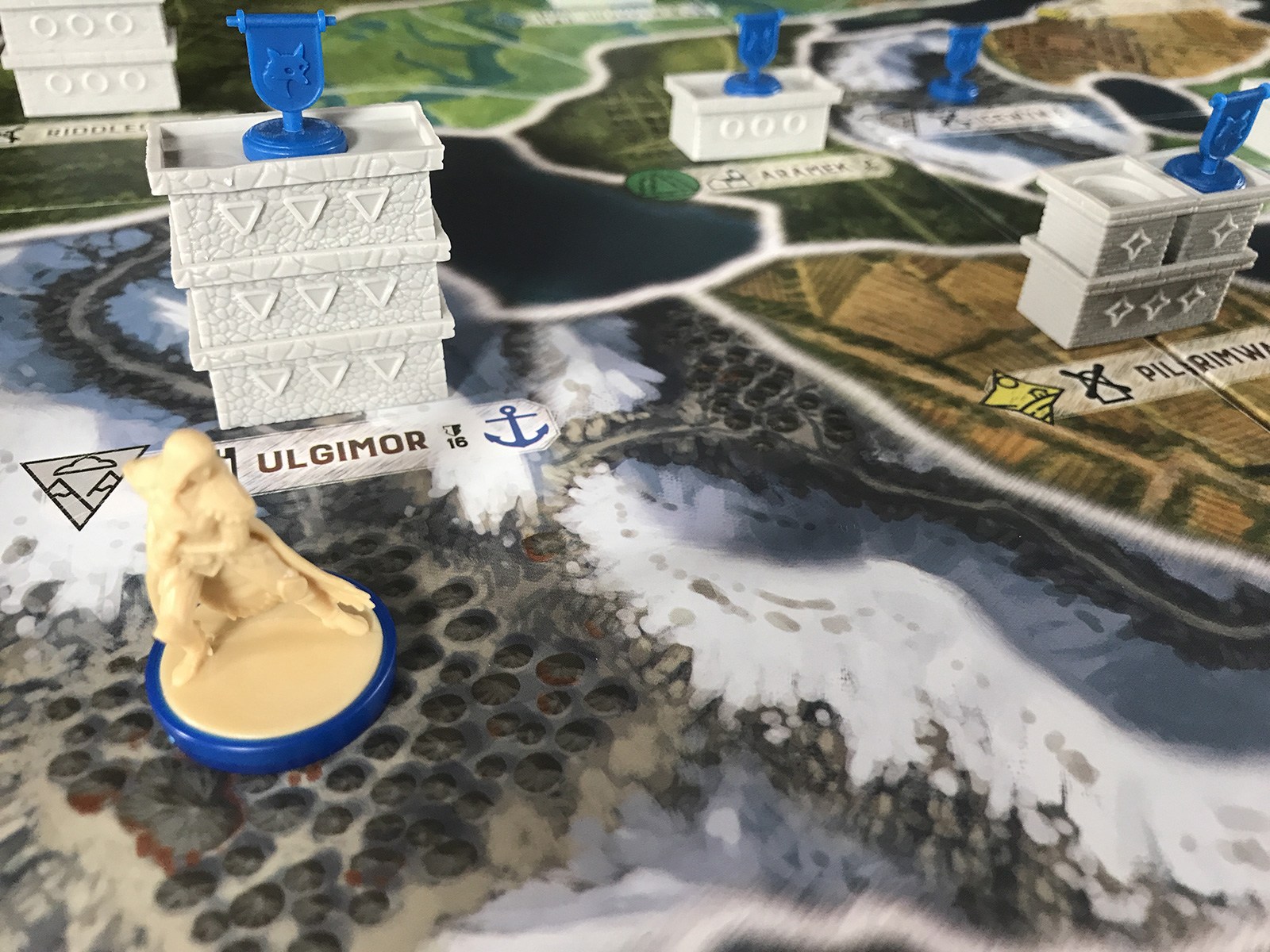
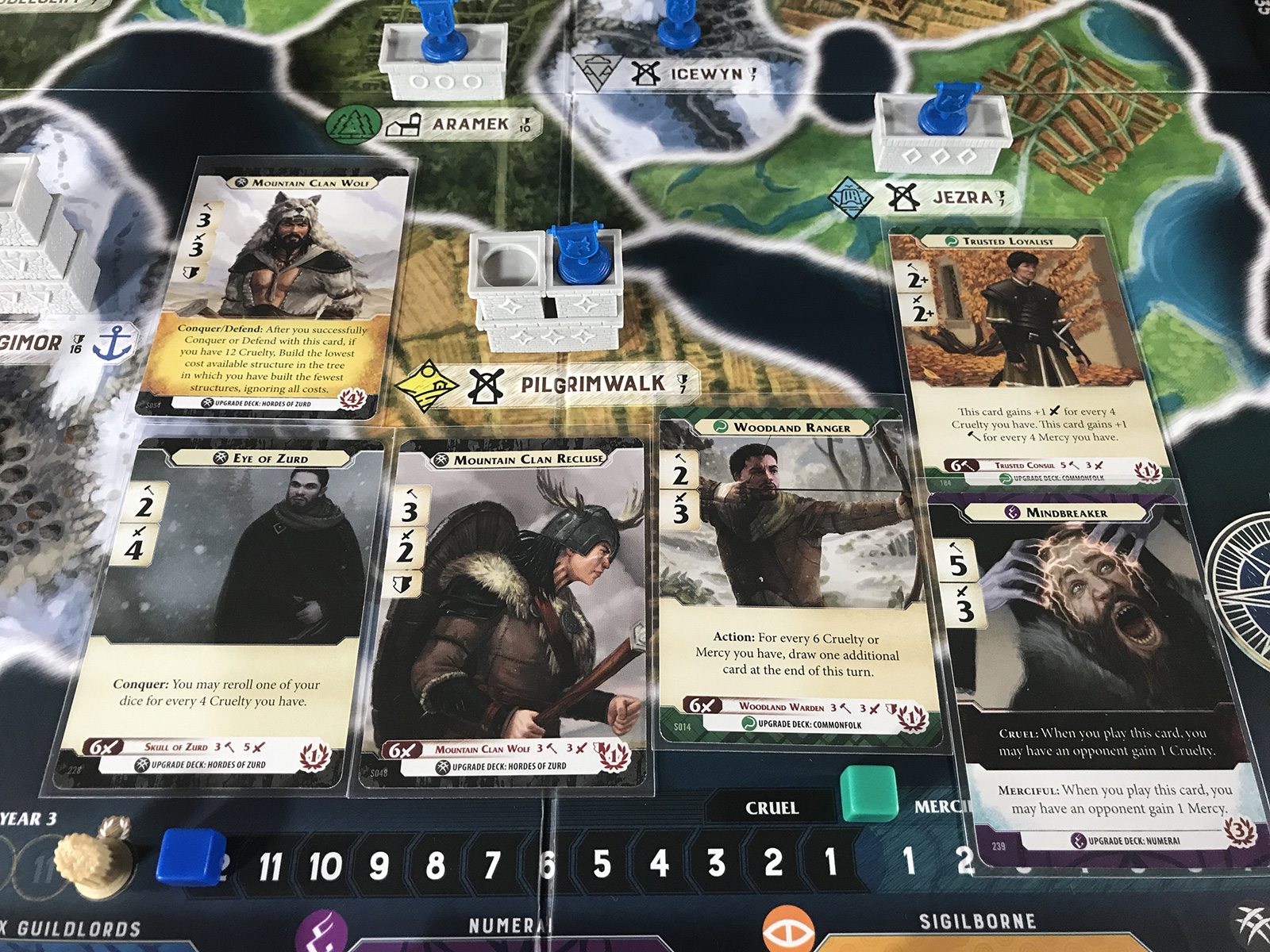
0 Comments